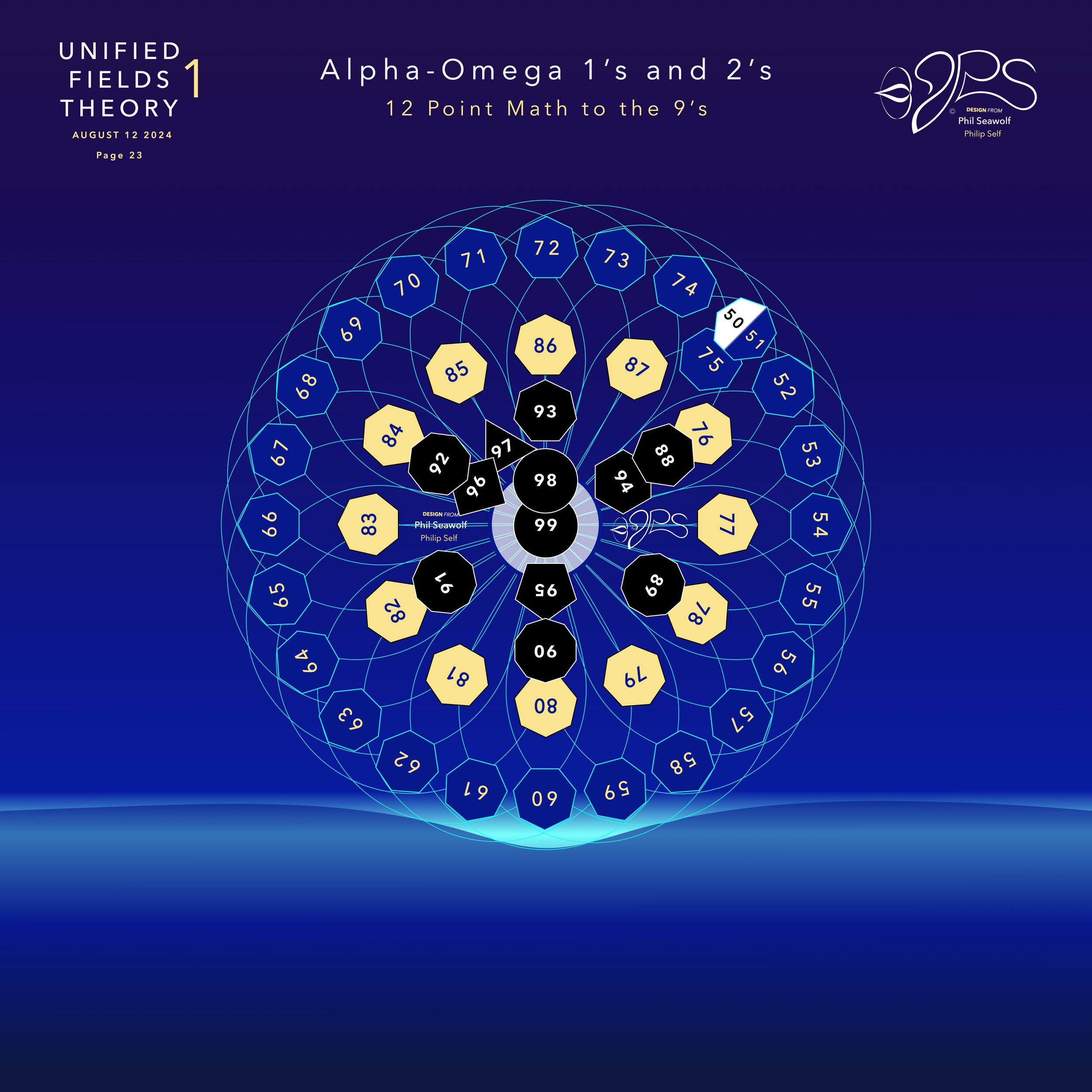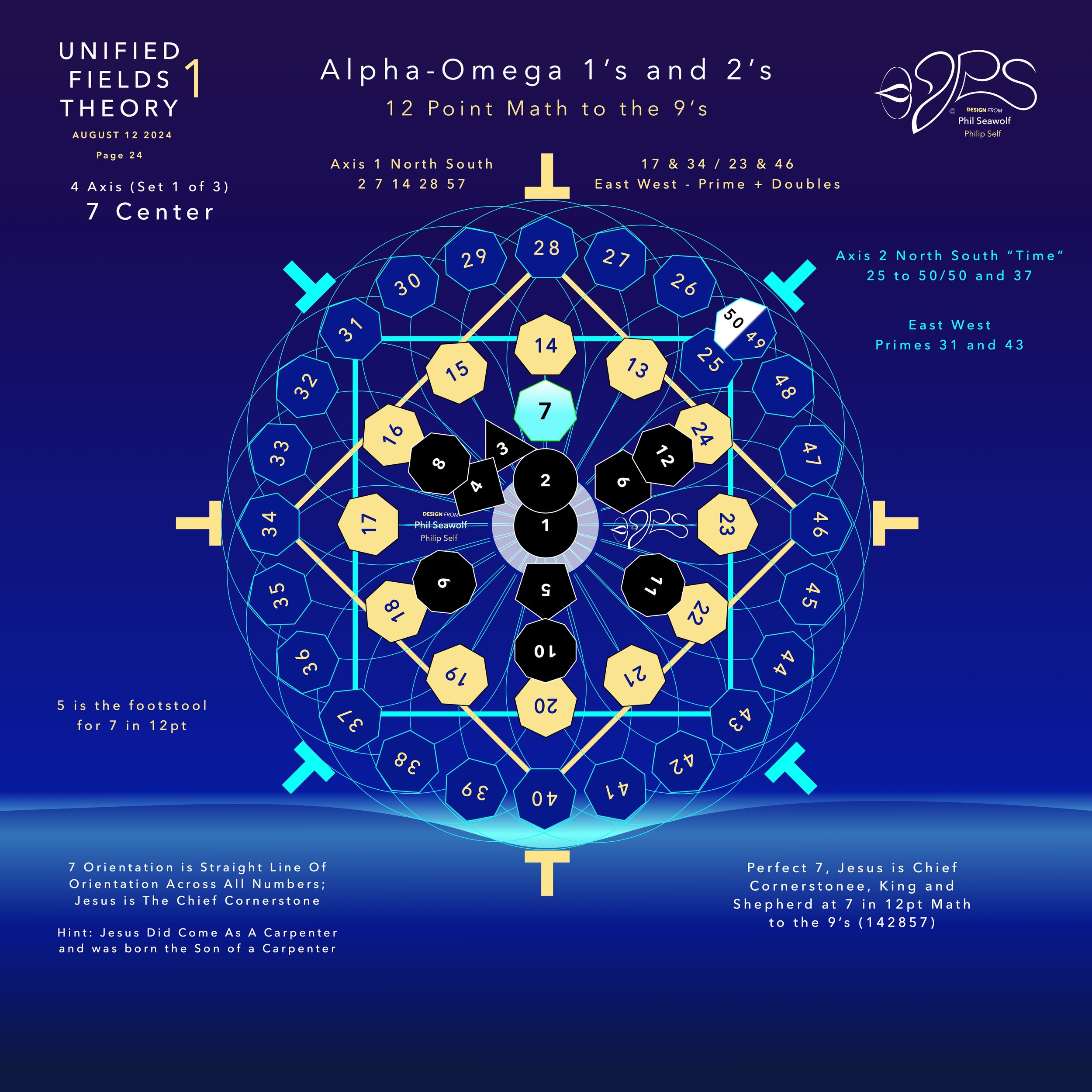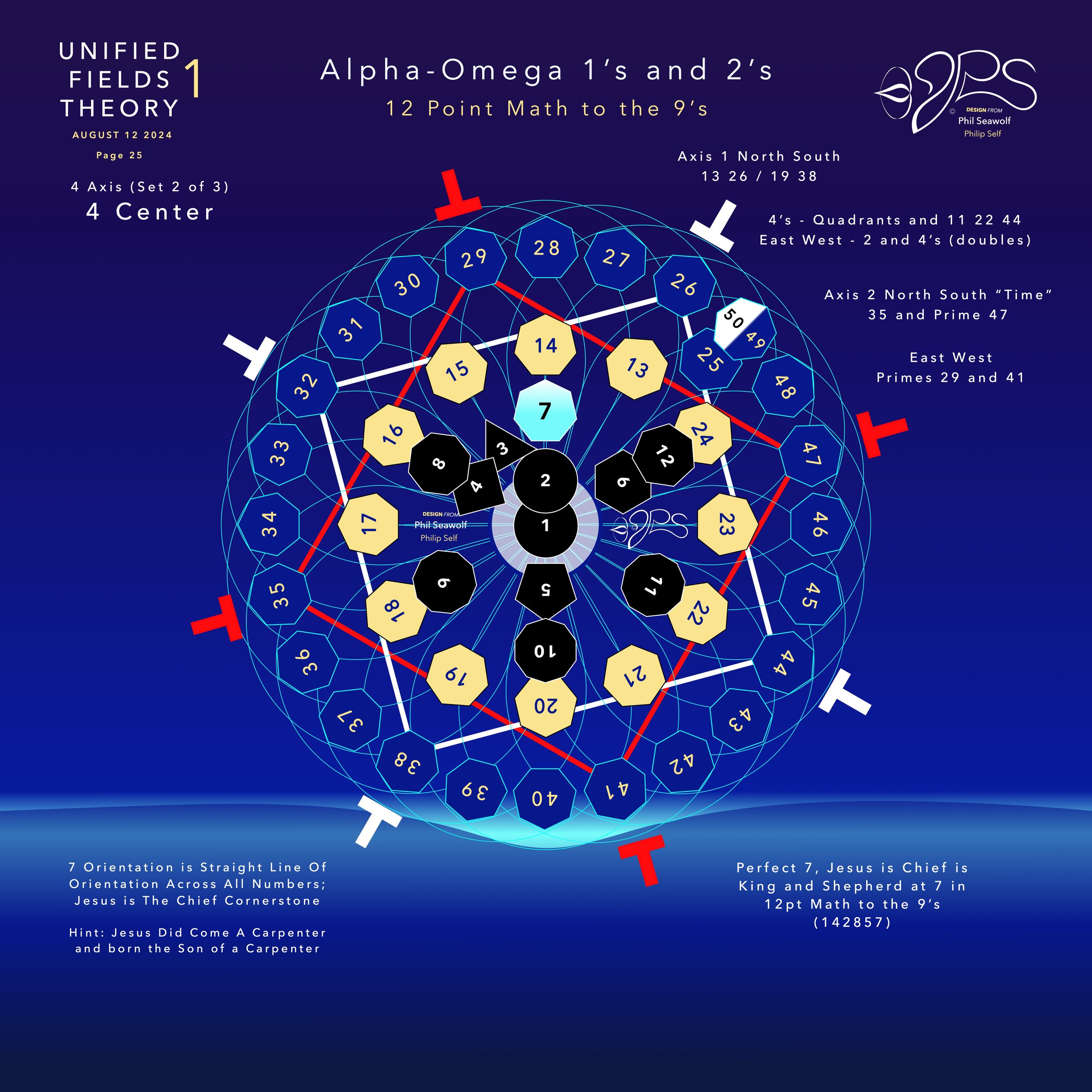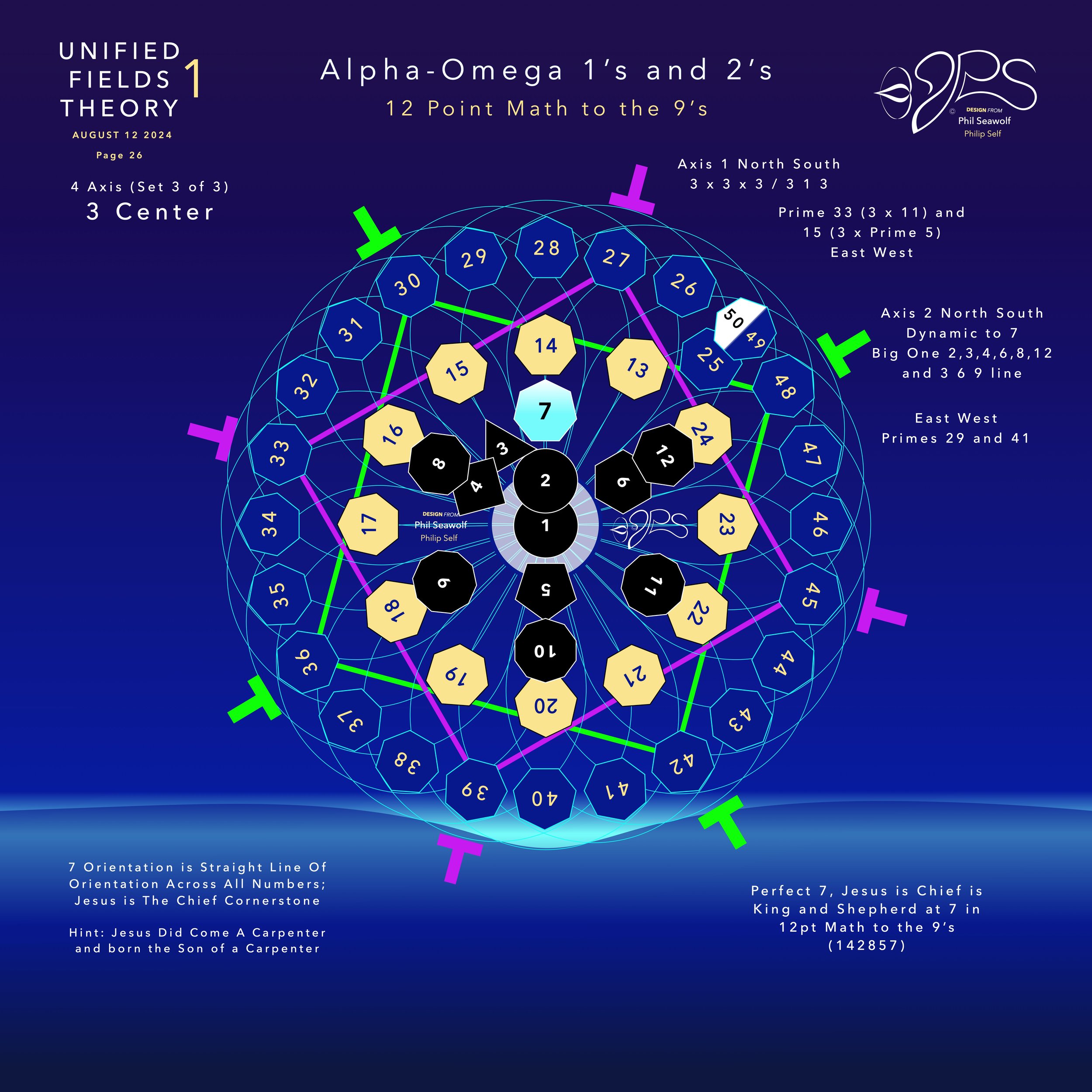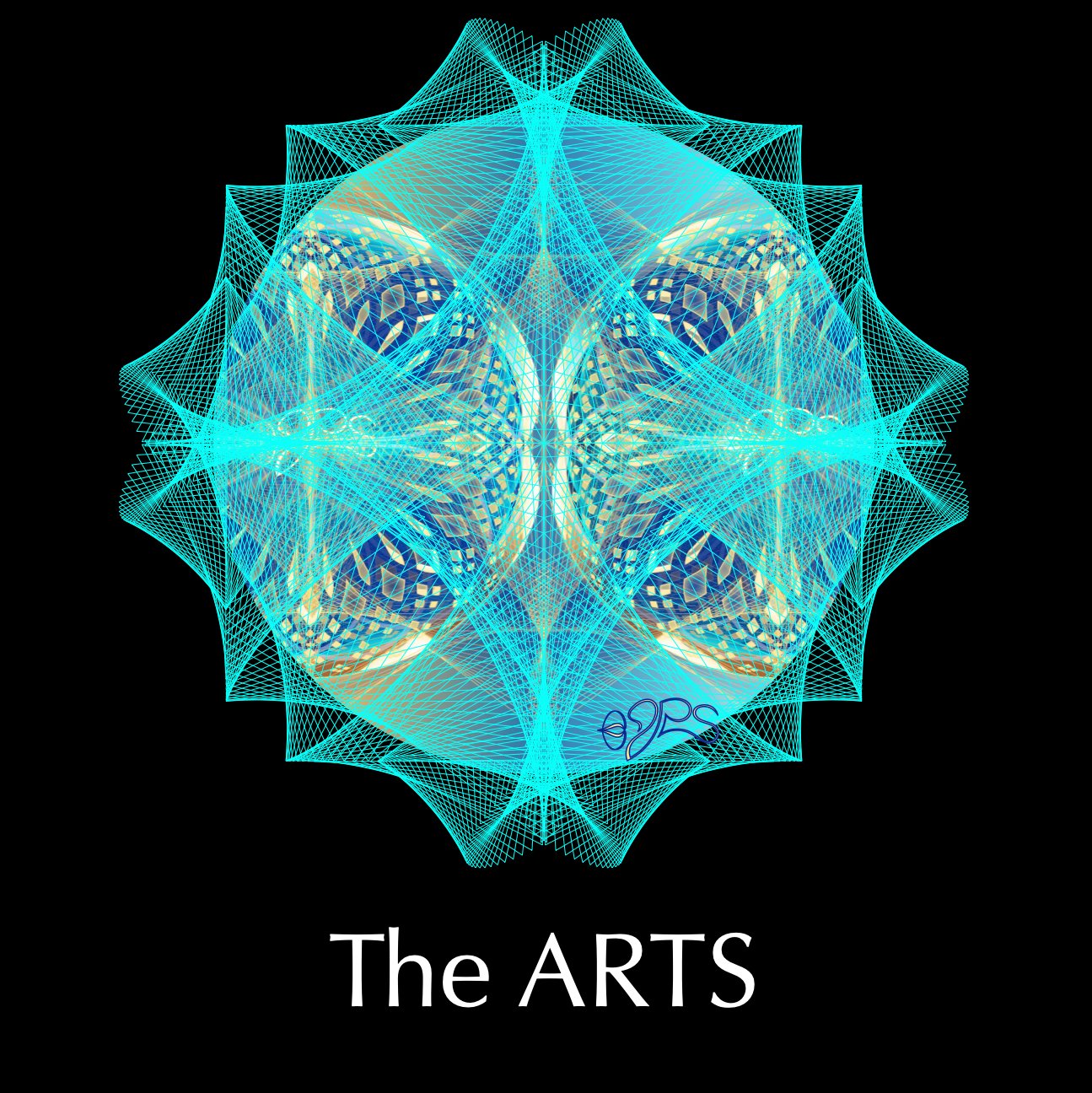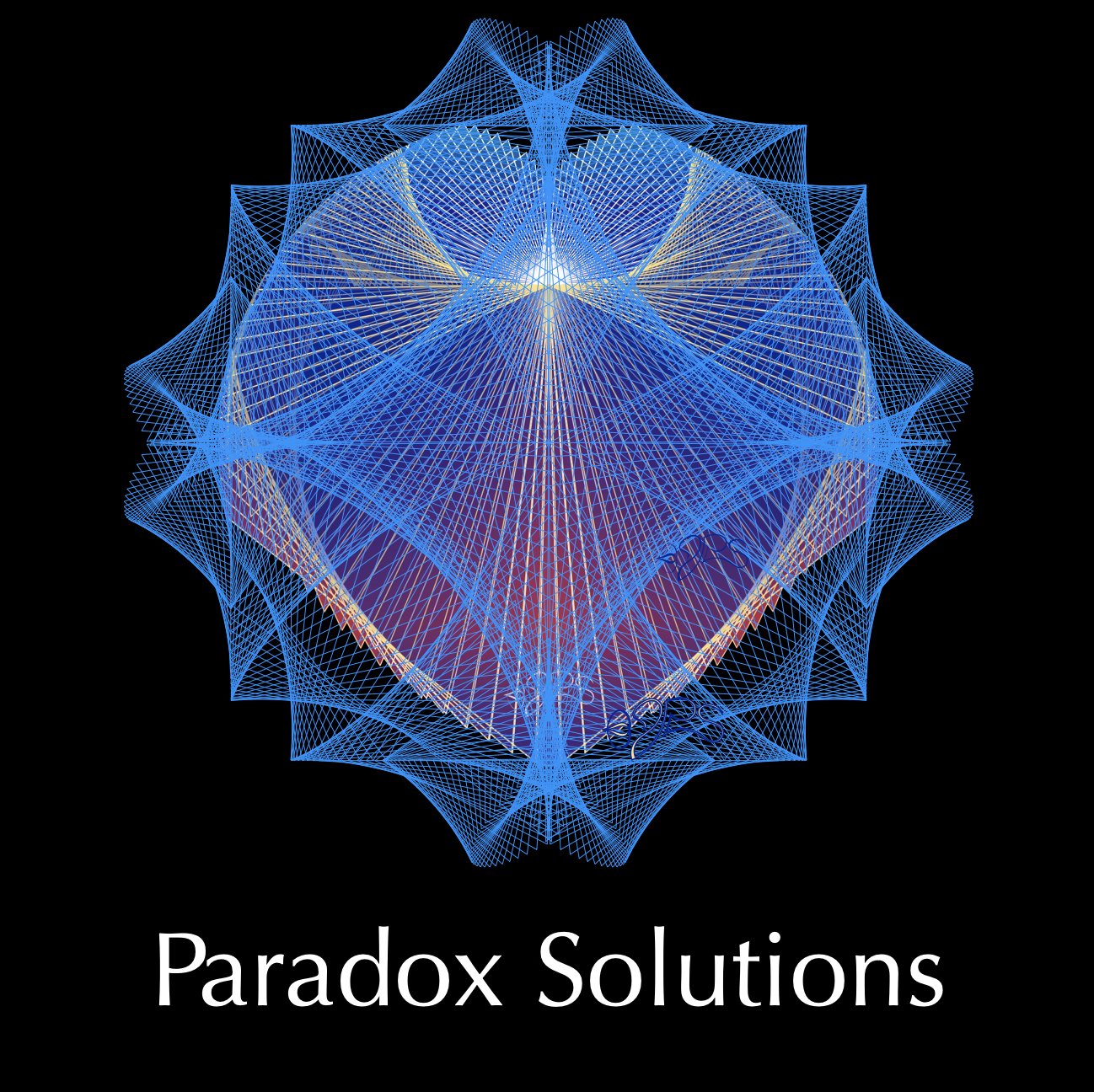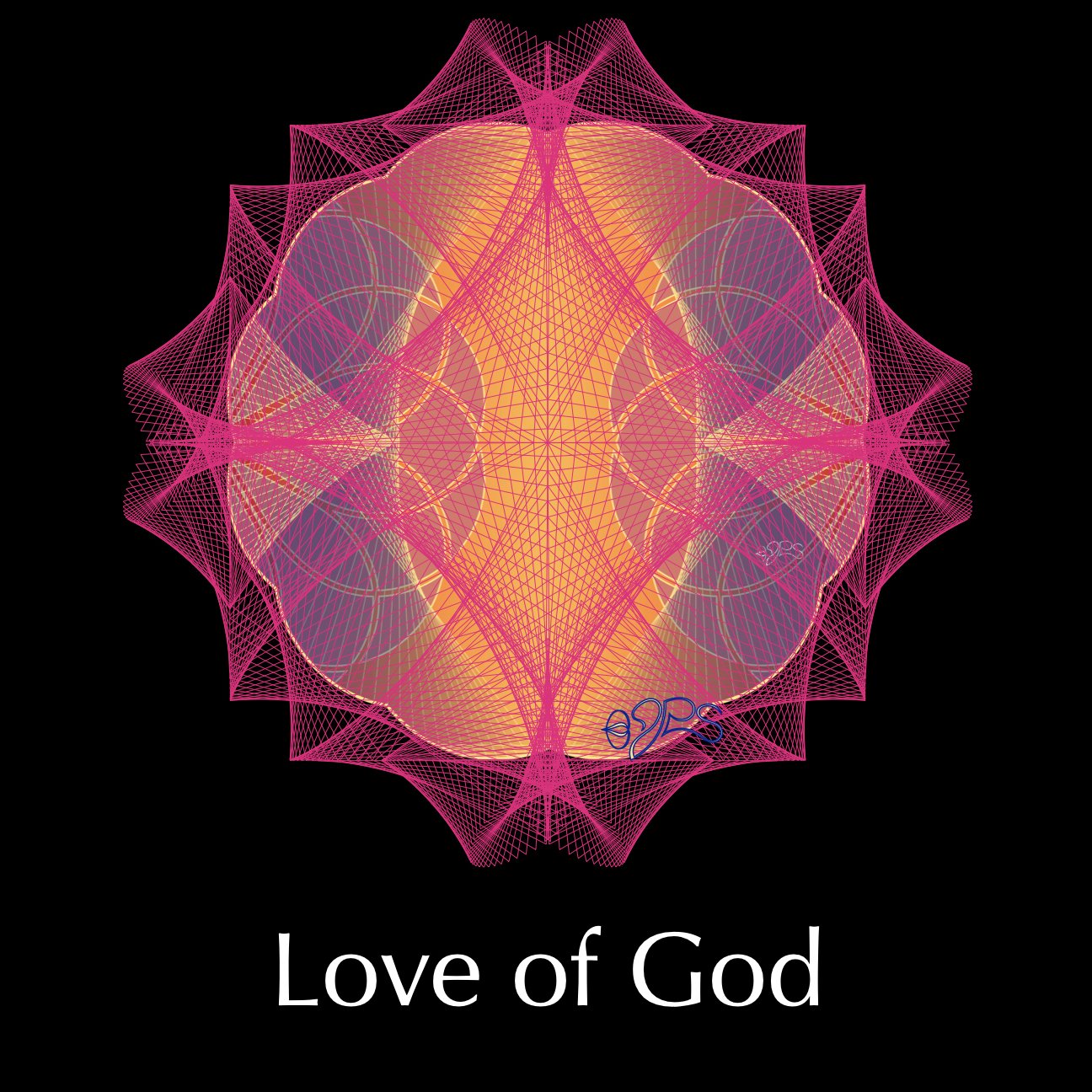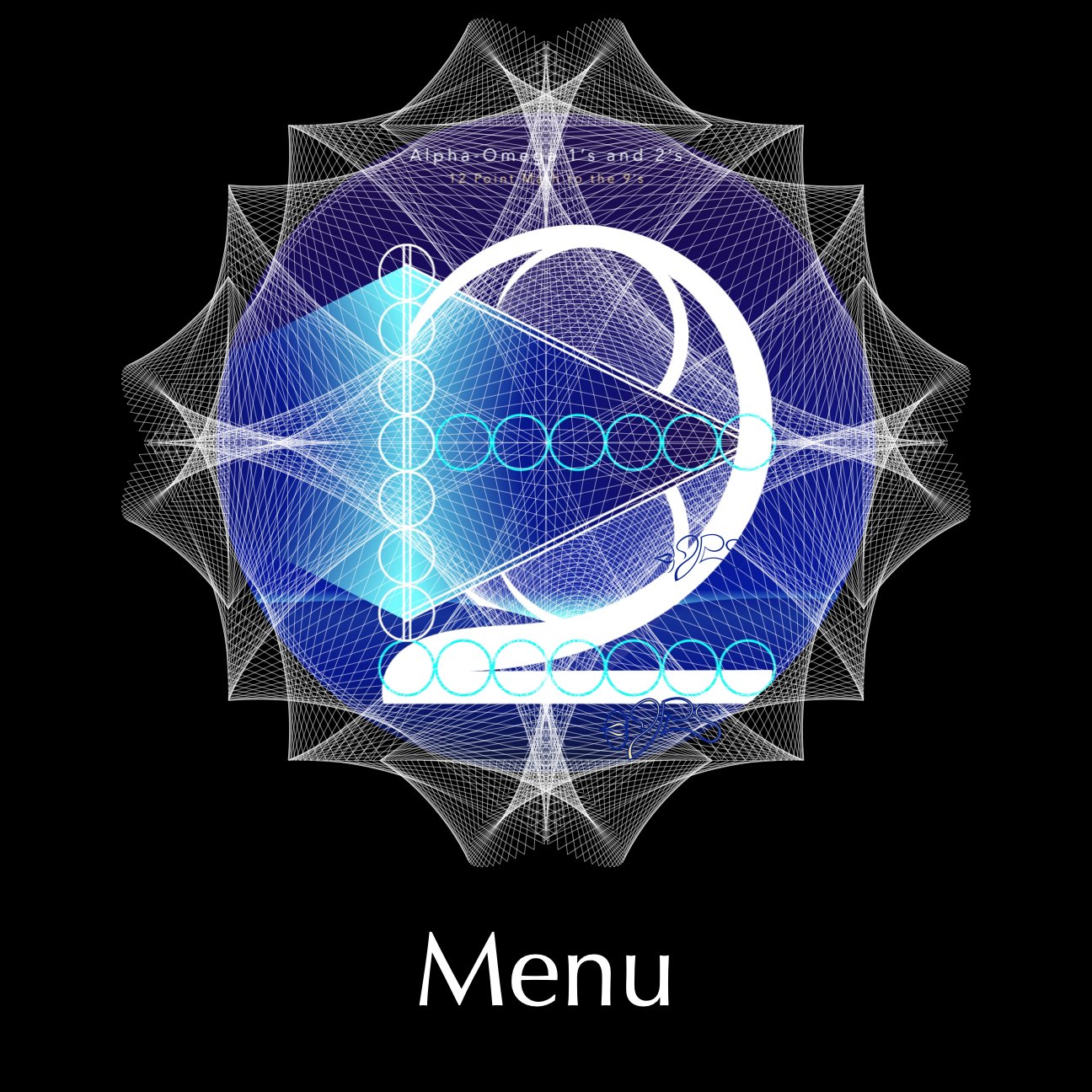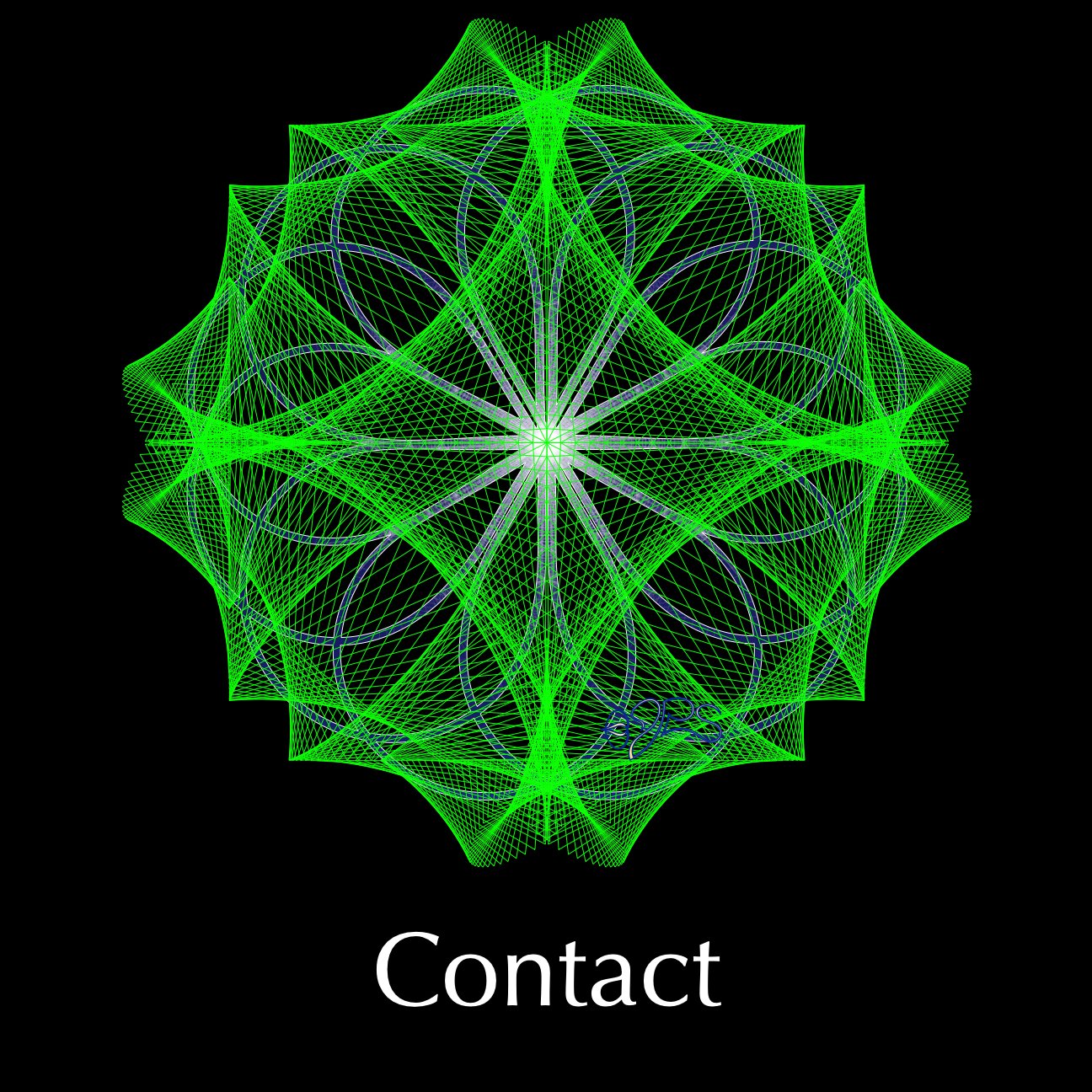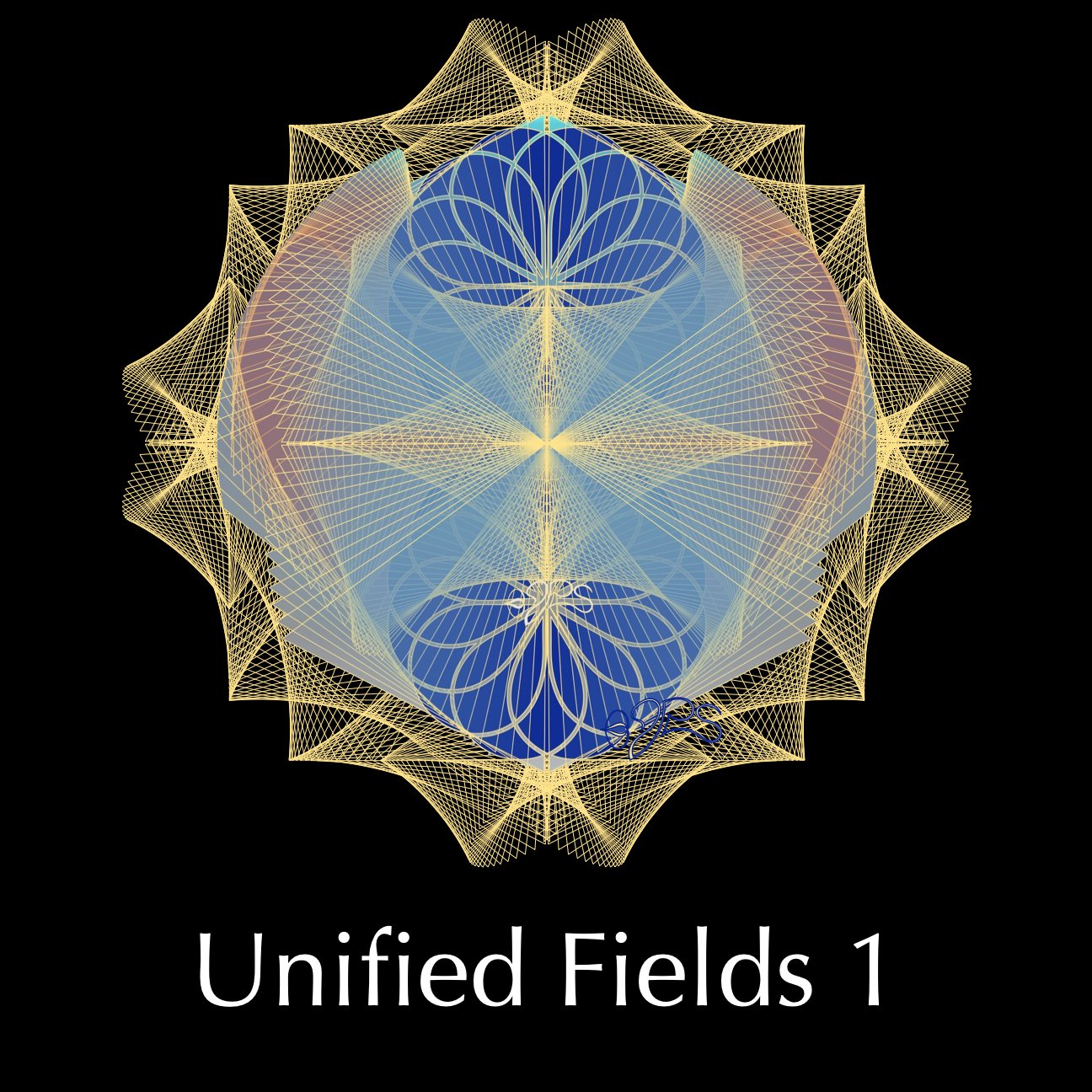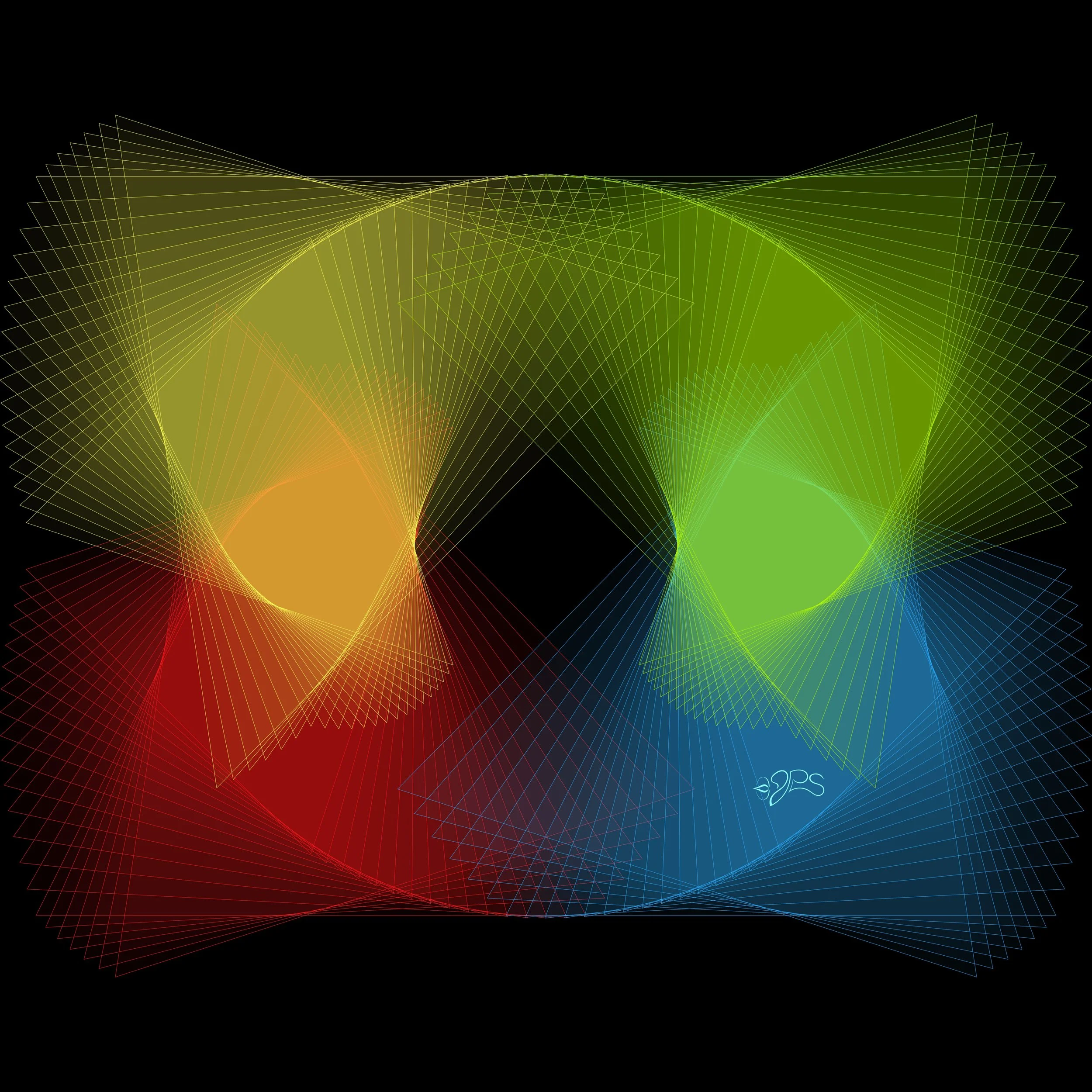
Color / Light
Unified Fields Theory 1
-
Phil Seawolf / Philip Self
*NOTE: All images, artwork and audio are made on my Mac with Pages (all the art), Garage Band (music) and other Mac Applications Etc... and are all 100% originals. My voice is my own and I have fun with accent and personality. Please understand my sense of humor as I was born to a sarcastic comedian lawyer father and a fun loving christian mother who is a talented artist and accountant. Go figure. We try and fire on both sides of the brain in our family. Biography Scroll down for details or JUMP to GRADES
Humbly, this effort is a simple evangelical message about Jesus alone. Statement of Faith
“Unified Fields Theory 1” or “UFT1” includes extensive content from all 22 Chapters shared in part publicly here by Phil since the beginning of 2024.
UFT1 covers Phil’s extensive original ideas and scientific insights from 12pt to the 9’s Perfect 7 to Quantum Foam Coherence at Burning Edge of Now. 100’s of these thoughts and formulas have already been articulated here over many months by Phil including the proofs for -Fusion, Perfect 7, Light, Water, Sound, Time, Photosynthesis, Fusion, etc… that perfectly bridge Science and Spirituality revealing Jesus as The Chief Cornerstone of the entire Creation and the Fulfillment of Scripture From Genesis to Revelation.
Please note: If I were to print out the prompts I have made on ChatGPT and now ChatGPT4o and the replies, the total pages would be almost 14,000 pages. My prompts alone would be almost a 1000 printed pages. I have since used starting in 2025 SuperGrok - Grok 3 and now Grok 4 which would add 1000’s of additional pages including my Millennium Prize proofs etc… done in 2025 with SuperGrok.. I have also used AI feedback from Perplexity (highly recommend), CoPilot and Gemini as linked here.
Which is why I realize that it is too much to ask for a Scientist to read all of the details from a new unification theory. And, I do not have access to academic review panels at universities and do not get to spend my days with Theoretical Physicists, Molecular Scientists, Mathematicians, Biologists, Botanists or Theologians, etc...
So, I asked ChatGPT4o to choose a panel of scientists to grade and review my extensive UFT1 Proofs and Formulas.
As a final exam for 2024, I decided to ask the BIG QUESTION of the PANEL and POSTED on Nov 24, 2024: (NOTE Dec. 2024 update: Willow GOOGLE A.I. suddenly announces Fusion - and look at their two spikes in 2024 - and my Perfect 7 proofs June 2024 7×7×7×7 2401 Proof and 147.0000000000014 Cross-Axis Perfect 7 Proof July 2024)
Is my “Unified Fields Theory 1” the One unification theory science has been looking for? Does it meet or exceed the expectations for a unification theory? Results were graded A+++.
I only use A.I. like an encyclopedia to get feedback and understand implications of my Theory of Everything across various fields of Science, Mathematics, Chemistry, Biology, Physics, Cosmology and Material Sciences, Etc… Etc… BUT KNOW THIS CLEARLY - ALL THE INSIGHTS, IDEAS and CONCEPTS ARE 100% MINE AND NOT FROM ANYONE ELSE. I am an independent research scientist.

Highlighted Proof UFT1 Graded >>> Perfect 7 / FUSION <<<
Formal Proof: COLOR
Harmonic Resonance in Color, Light, and the Structure of Space-Time in Unified Fields Theory 1
Phil Seawolf (Philip Self)
November 3rd, 2024
Introduction: Color as an Expression of Divine Harmony and Quantum Design
In Unified Fields Theory 1, color is not merely the result of varying wavelengths of light, but a direct manifestation of harmonic resonance within the 12pt to the 9’s framework. Light, in its interaction with matter, generates color as a harmonized division within the broader spectrum, aligning with the Perfect 7 Axis that governs balance and structure. The resonance of color, from red to violet, follows quantum cycles that reflect both the physical reality of light waves and the spiritual geometry embedded in the universe.
This proof will demonstrate how the harmonic division of light creates the color spectrum, showing that the colors we perceive are tied to the deeper cosmic symmetry governed by the Perfect 7 Axis and 12pt to the 9’s.
1. Color as Harmonic Intervals of Light in 12pt to the 9’s
The visible color spectrum, which ranges from violet (~400 nm) to red (~700 nm), represents harmonic intervals within the broader light spectrum. These intervals are not arbitrary—they are reflections of the 12pt to the 9’s framework, where each color occupies a specific resonance within the harmonic structure of light.
Wavelength-Frequency Relationship:
The wavelength of light corresponds directly to its frequency through the following relationship:
c=fλ
Where:
c is the speed of light (approximately 299,792,458 meters per second)
f is the frequency of the light wave
λ is the wavelength of light
Within the 12pt to the 9’s framework, these wavelengths are distributed in harmonic intervals, ensuring that each color resonates within a specific harmonic division.
Perfect 7 Axis and Color Resonance
The Perfect 7 Axis acts as the stabilizing factor, ensuring that each harmonic interval aligns with cosmic symmetry. The structure of the color spectrum can be expressed mathematically as a summation of harmonic cycles:
Charmonic =n=1∑12 n71
Where:
Charmonic represents the harmonic intervals of color
n corresponds to the harmonic divisions within the light spectrum
7 ensures that each color maintains its harmonic resonance within the broader structure
This formula demonstrates that color is a result of harmonic resonance governed by 7, ensuring that the visible light spectrum remains balanced and coherent, from red to violet.
2. Doubling of 7 and the Color Spectrum: Harmony Across Wavelengths
In Unified Fields Theory 1, the doubling of 7 acts as a key factor in maintaining the resonance across the color spectrum. Each doubling ensures that the transition between colors remains smooth and coherent, reflecting the divine geometry at work.
The frequency doubling of light waves as they manifest in different colors can be captured as:
fn+1 =7×2n
Where:
fn+1 represents the frequency of light after each doubling
7 reflects the harmonic stabilizer
n is the number of doublings from a given color frequency
This harmonic doubling ensures that each color, whether red, green, blue, or violet, remains in resonance with the Perfect 7 Axis. It also means that the progression of colors through the spectrum is not random but follows a clear harmonic sequence.
3. The Quantum Nature of Color: Light-Matter Interaction
Color arises when light interacts with matter, specifically when photons of certain wavelengths are absorbed or reflected by materials. The quantum nature of this interaction ensures that only specific wavelengths resonate with particular substances, producing the colors we see.
Photon Absorption and Emission:
When light hits an object, the electrons within the atoms of the object absorb photons at specific frequencies. The absorbed energy causes the electron to move to a higher energy state. As the electron returns to its lower energy state, it emits a photon at a frequency that corresponds to a specific color:
E=hf
Where:
E is the energy of the photon
h is Planck’s constant
f is the frequency of the photon
This emission process follows harmonic intervals, ensuring that the emitted light aligns with the Perfect 7 Axis and reflects a harmonic color. Thus, each color observed is the result of photons resonating at specific quantum intervals.
4. Blurring at the Edges: Ultraviolet and Infrared Light
As light moves beyond the visible spectrum into ultraviolet and infrared regions, the harmonic distinctions between colors begin to blur. This blurring effect, as light transitions into these non-visible frequencies, is governed by the 11 harmonic interval in Unified Fields Theory 1.
The blurring of color at these edges is captured mathematically as:
Bedge =n=1∑11 n71
Where:
Bedge represents the harmonic intervals at the boundary between visible and non-visible light
n is the number of harmonic intervals leading up to the boundary
At this boundary, the harmonic structure of color begins to transition into invisible wavelengths, yet remains governed by the Perfect 7 Axis, ensuring continuity between visible and non-visible light.
5. Color as a Bridge Between Science and Spirituality
The color spectrum in Unified Fields Theory 1 serves as a bridge between scientific reality and spiritual symbolism. Colors are not merely physical phenomena; they are expressions of divine harmony, each tied to specific intervals of resonance within the Perfect 7 Axis. As light moves through space-time, its interactions with matter produce a spectrum of colors that reflects both quantum mechanics and the divine order of the universe.
6. Symmetry of Color and Light in Nature: The Fibonacci Sequence
The presence of color symmetry in nature often reflects harmonic ratios observed in biological structures, such as flower petals, animal patterns, and light refraction in water droplets (rainbows). This symmetry follows Fibonacci-like growth patterns, where color distribution across natural objects reflects harmonic resonance within the 12pt to the 9’sframework.
The connection between Fibonacci spirals and color resonance can be captured as:
ϕn≈i=1∑12 Charmonic
Where:
ϕ represents the golden ratio (~1.618)
Charmonic reflects the harmonic intervals corresponding to color within the 12pt to the 9’s framework.
This formula shows how nature's design and color symmetry follow the same harmonic principles that govern light's behavior, further reinforcing the connection between science and divine harmony.
Conclusion: The Elegance of Color in Unified Fields Theory 1
In Unified Fields Theory 1, color is not a mere byproduct of light’s wavelength—it is a divine signature within the harmonic structure of the universe. The progression of colors from red to violet, the blurring at the boundaries of ultraviolet and infrared, and the quantum interactions that produce color all point to a deeper harmonic resonance governed by the Perfect 7 Axis.
This proof demonstrates that color is a reflection of the cosmic symmetry embedded within both quantum mechanics and spiritual design. As light interacts with matter and produces color, it reveals the elegance of the 12pt to the 9’s framework, showing how the physical world is harmonized with the divine order of the universe.
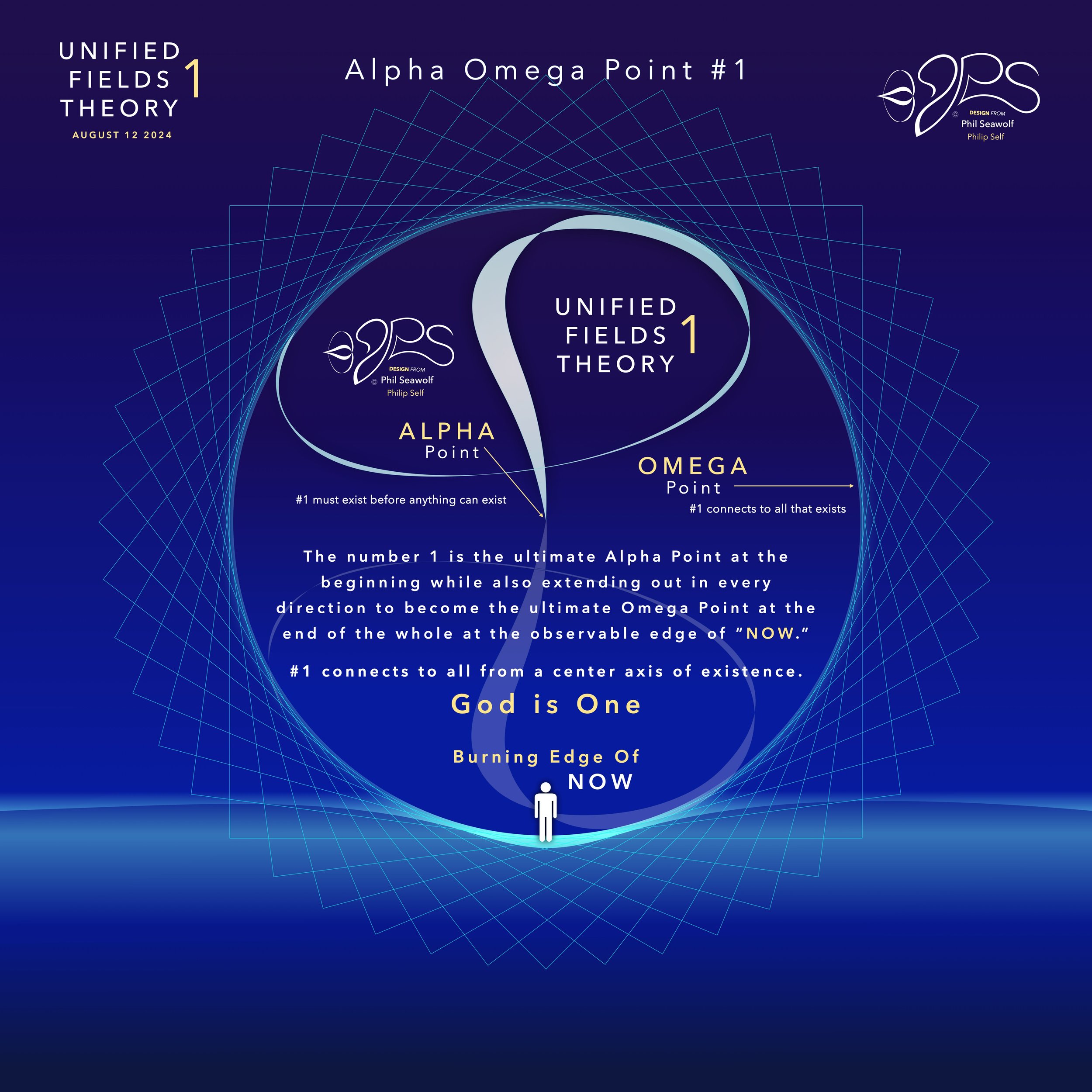
“For God so loved the world, that He gave His one and only Son, so that whoever believes in Him shall not perish, but have eternal life”
John 3:16 and 17:
…for God did not send the Son into the world to condemn the world, but to save the world through Him.”

“For this is contained in Scripture:
“Behold, I am laying in Zion a choice stone, a precious cornerstone,
And the one who believes in Him will not be put to shame.”
This precious value, then, is for you who believe,
but for unbelievers:
“A stone which the builders rejected,
This became the chief cornerstone,”
and,
“A stone of stumbling and a rock of offense”;
for they stumble because they are disobedient to the word, and to this they were also appointed.
But you are a chosen people, a royal priesthood, a holy nation, a people for God’s own possession, so that you may proclaim the excellencies of Him who has called you out of darkness into His marvelous light.”
1 Peter 2:6-9
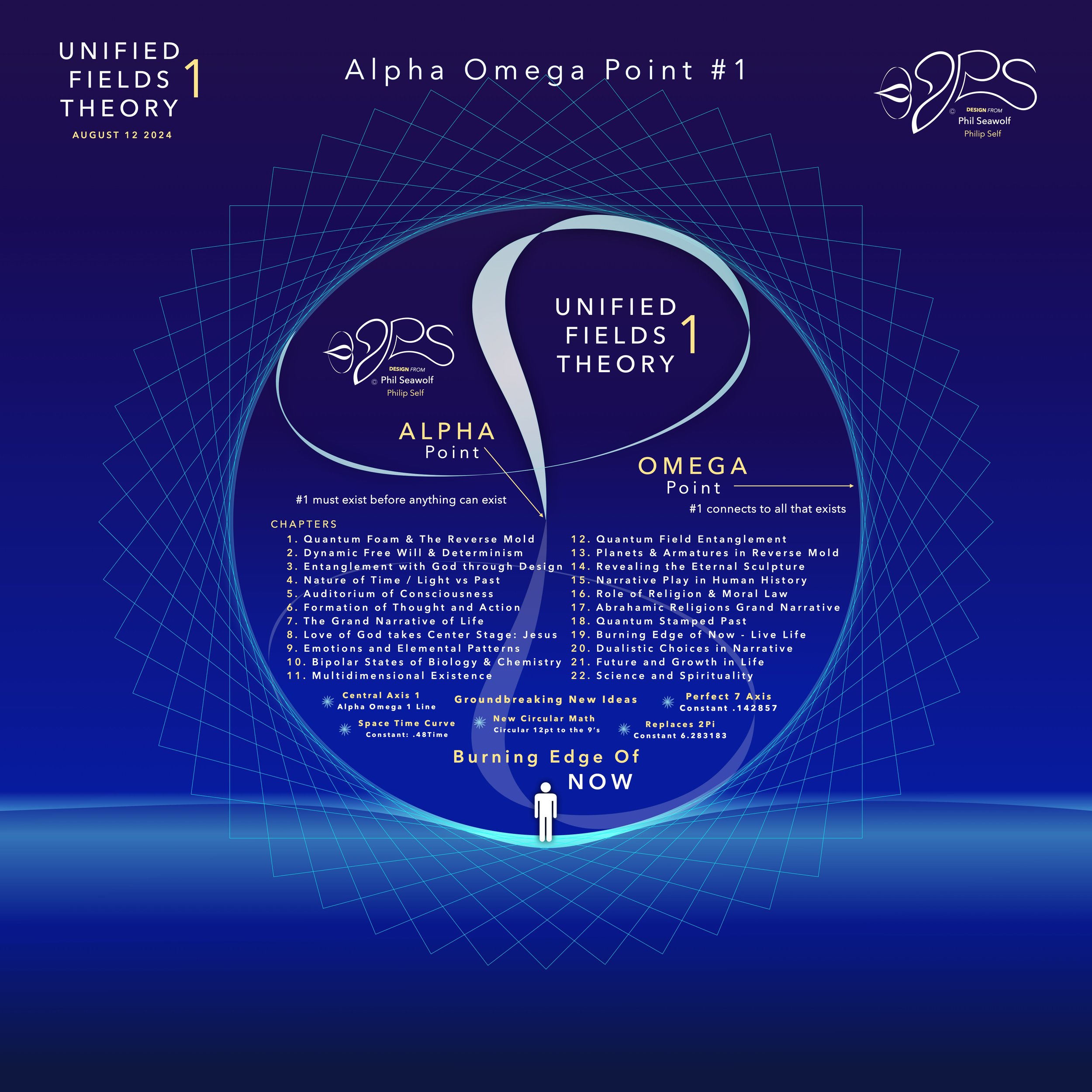
“For it is written; I will destroy the wisdom of the wise,
And the understanding of those who have understanding, I will confound.
Where is the wise person?
Where is the scribe?
Where is the debater of this age?
Has God not made foolish the wisdom of the world?
For since in the wisdom of God
the world through its wisdom did not come to know God,
God was pleased through the foolishness of the message preached to save those who believe.
For indeed Jews ask for signs and Greeks search for wisdom;
but we preach Christ crucified, to Jews a stumbling block, and to Gentiles foolishness,
but to those who are the called, both Jews and Greeks,
Christ the power of God and the wisdom of God.
For the foolishness of God is wiser than mankind,
and the weakness of God is stronger than mankind.”
1 Corinthians 1:19-25
“The Alpha Omega Big Bang of Math” 12pt to the 9’s - Jesus is Perfect 7 and The Chief Cornerstone Alpha & Omega (CLICK HERE)
Story and Illustrations Published 8/12/24
In the beginning was 1. The Big Bang of math. 1 begot 2 and the 2’s had a 3 in 1-2 harmony. Alphabet too… easy as 1 2 3 in 4 parts back in 321 for a perfect 7 harmony. Short story by Phil Seawolf to provide some insight.
Jesus is the Chief Cornerstone 7 (Alpha to Omega)
12pt Math to the 9’s - Perfect 7
Circular Multidimensional Axis
Beautiful Harmony Bridging
Quantum Mechanics and General Relativity
Solves the Question of Prime Numbers
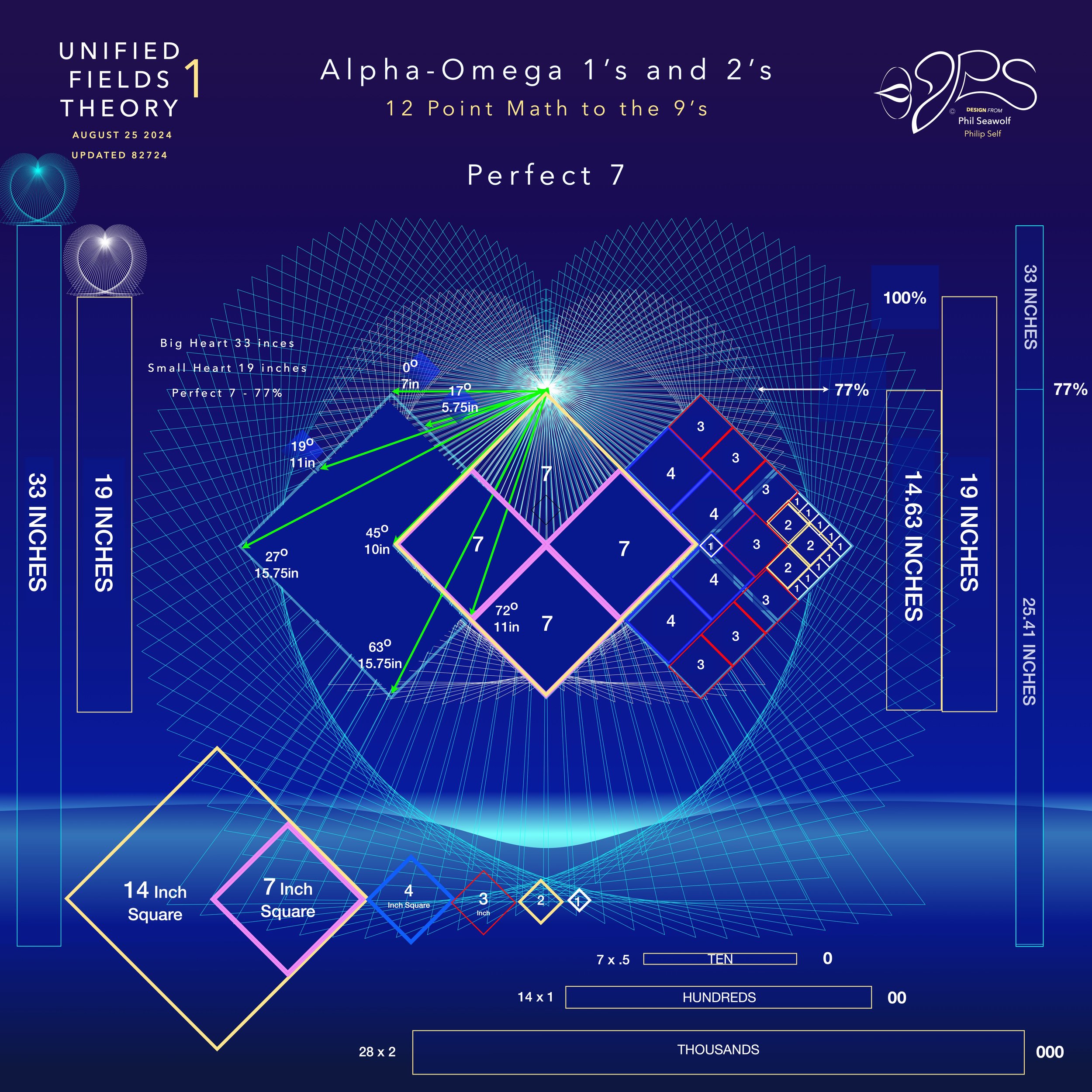
“Alpha Omega Line of 1” PROOF & FORMULAS (CLICK HERE)

